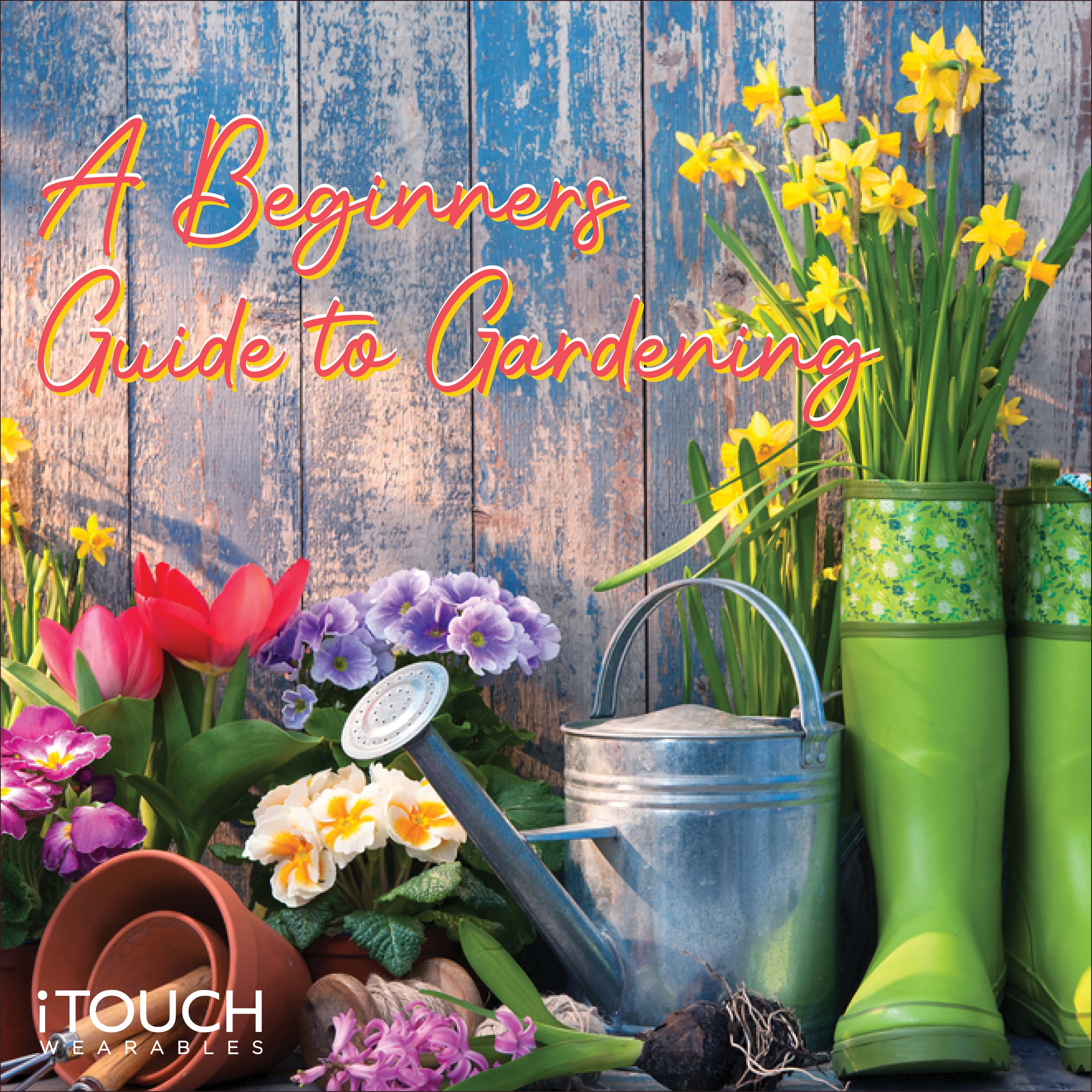
A Beginners Guide To Gardening
So, now that you have mastered being a plant parent in your own home, it is finally time to move onto the outside! The weather is finally warmer, the sun is out, so why not take advantage of the gorgeous day and have some fun doing a little gardening. Starting a garden is one of the most rewarding things one can do and can actually be quite easy if you know that steps on how to do it. Whether you're planting fragrant florals for the summer or even thinking about harvesting your own fruits and vegetables, anyone can benefit from getting their hands a little dirty. If you are new to gardening and want to know how to start, we created this little guide on gardening to help you create the outdoor gardens of your dreams.
1 - Consider What You Want To Plant

The first step to anything is always research - even when it comes to gardening. Have you spent time deciding what you want to grow? Do you want to plant a vegetable garden, or maybe do you want to grow culinary herbs? If you choose vegetables and/or herbs, you may want to spend time researching which ones you enjoy eating, how they would need to be grown, and maybe even new ones that you are willing to try. If you want flowers just for their flair, color, and fragrance, it is important to take time in researching whether you want annuals that bloom most of the summer but need to be replanted each spring or perennials that have a shorter bloom time but return year after year. These are all valid choices but have different maintenance requirements, which definitely suggests that one starts small until they get comfortable expanding.
2 - Find The Right Spot

When it comes to gardening, almost all vegetables and flowers need anywhere from 6-8 hours of full sun each day. To begin growing your own garden, you will need to observe your yard throughout the day to figure out which spots receive full sun versus partial or full shade. You should not fret if your yard gets a ton of shade, as there are tons of plants that enjoy it such as ferns and hostas. However, this is definitely a critical step in the process as each plant you grow has their own specific light requirements to meet so they can thrive. It is recommended that you always check the tag on your plants or ask the staff at your local garden center to help you understand out how much sun a plant requires.
Pro-Tip : Pick a relatively flat spot for your garden because it’s more difficult, time-consuming, and expensive to deal with a sloped-garden!
3 - Clear The Space and Ground

In clearing out any space for your garden, it is suggested that you get rid of the sod, or grass, covering the area you plan to plan in. If you want quick results, cut it out completely by slicing under the sod or by cutting the sod into sections to make it easier to remove. Be sure to put it on your compost pile to decompose to practice some sustainability along the way!
4 - Work The Soil

Working the soil is essential to preparing new planting beds because it allows roots to penetrate the soil more easily to access water and nutrients. There are two methods: tilling and digging.
- Tilling uses a mechanical device such as a rototiller to help work the soil. This is a good method when you need to incorporate large amounts of plants and vegetables. However, it can also disturb microorganisms and earthworms living in the soil, so it is important to do too little than too much when it comes to this method.
- Digging is more practical for preparing small beds. Dig only when the soil is moist enough to form a loose ball in your fist but dry enough to fall apart when you drop it.
5 - Pick Your Plants

When it comes to picking out plants, some people look and research for months, while others head to the garden center and buy what wows them. Either method works, but just be sure to pick plants adapted to your climate, soil, and sunlight. Here are a few easy-to-grow plants for beginners:
- Annuals: Calendula, Cosmos, Geraniums, Sunflowers, and even Zinnias
- Perennials: Black-eyed Susan, Day-lilies, Pansies, or Sage
- Vegetables: Cucumbers, Peppers, or Tomatoes
6 - Grow Your Findings

Many of the plants you choose, such as sunflowers, are actually quite easy to grow from seed directly in the garden. The easiest way to do so is actually by just reading the information found directly on the seed packet, which will provide everything you need to know about planting time, depth, and spacing. When it comes to directly planting your picks, an easier method of starting your garden for the beginner planter is to buy young plants already grown, which are often at times called set plants. Dig holes in your prepared bed based on tag instructions. Remove plants from the container by pushing up from the bottom. If the roots have grown into a big ball (a condition known as being root-bound), use a fork or your fingers to untangle some outer roots before setting it into the hole. Pat soil into place around the roots, then soak the soil with water.
When your garden grows, help it reach its full potential by keeping up with garden chores. Water the plants. Pull the weeds if they become too invasive. Get rid of dead, dying, and diseased vegetation by pruning your plants. Always remember to stop and smell the... well, whatever it is you’re growing. With these steps, you'll be an outdoor plant parent in no time!
Share with us your tips for gardening by following us on Instagram @itouchwearables and Facebook @itouchwearables and by dropping a comment and like. Also, be sure to check out our new articles published daily!
-Patrick


